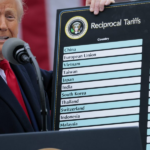The landscape for federal tax credits for electric vehicles (EVs) has undergone changes with the implementation of new rules by the Department of Energy (DOE) at the beginning of the year. These rules have narrowed down the list of eligible vehicles, impacting various automakers and models. As of now, only 13 EVs made in North America qualify for federal tax credits, compared to the previous count of 21 models before the new rules came into effect.

Key Changes and Impact:
- Restrictions on Battery Components: The recent adjustments in federal rules focus on limiting tax credits for EVs with battery components originating from certain countries, such as China. This has resulted in notable models like the Tesla Model 3 RWD, Ford Mustang Mach-E, and Volkswagen ID.4 being disqualified from tax credits.
- Eligible Plug-in Hybrids (PHEVs): Despite controversy surrounding their status as zero-emission vehicles, some PHEVs maintain their tax credit eligibility. The Chrysler Pacifica in PHEV trim qualifies for the full EV tax credit of $7,500, standing out as the only PHEV to receive the full amount. Other PHEVs, including the Ford Escape PHEV, Jeep Grand Cherokee PHEV 4xe, Wrangler PHEV 4xe, and Lincoln Corsair Grand Touring PHEV, qualify for half the federal tax credit, or $3,500.
- Impact on Major Automakers: Prominent automakers such as Ford, GM, Nissan, and Tesla have experienced changes in their EV tax credit status. For example, Ford lost tax credits for its Mustang Mach-E SUV and E-transit vans but retained them for the F-150 Lightning EV pickup. GM lost tax credits for certain models but announced $7,500 incentives to boost sales during the period of ineligibility.
- Rivian and Tesla’s Status: Rivian retains the half credit of $3,500 for its R1T pickup and R1S SUV. Tesla, which lost eligibility for certain models, still has several qualifying vehicles, including the Model 3 Performance edition, Model X Long Range SUV, and various variants of the Model Y SUV.
- Cybertruck’s Potential Eligibility: The Cybertruck, produced by Tesla, is not currently on the list, but its use of batteries built at Giga Austin raises the possibility of future eligibility. Tesla has indicated that the Cybertruck is likely to qualify for the federal tax credit later in 2024.
- Potential Expansion of Eligible Vehicles: The initial list of 13 eligible vehicles may expand as automakers, including GM and Ford, actively work to source more battery components domestically or from friendly trade partners.
In conclusion, the evolving landscape of federal tax credits for EVs reflects ongoing efforts to encourage the production and adoption of electric vehicles while aligning with domestic sourcing initiatives. The potential expansion of eligible vehicles underscores the dynamic nature of environmental policies and incentives in the automotive industry.









